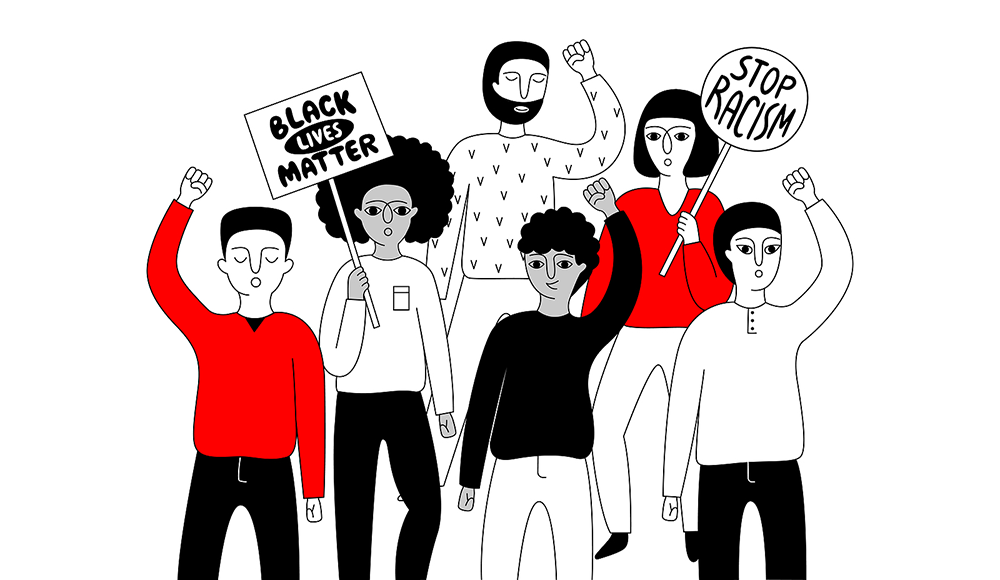Diverse Hiring Isn’t Enough: The 4 Pillars of Becoming an Anti-Racist Organization

This year has been challenging — to say the least — in many, many ways, from a global pandemic exposing inequities in healthcare, education, and working conditions to renewed attention on police brutality leading to calls for an end to systemic racism. There is barely an area of life that has not been touched by these events, and that includes the workplace.
There has been a lot of talk about diversity, equity, and inclusion in the HR community for years, but the events of 2020 brought new urgency to these efforts. While building an anti-racist organization is a long and often uncomfortable process, I truly believe it can be done in workplaces across the country if we implement practices that create cultures of inclusion and equity instead of focusing on diversity data that doesn’t show the full story.
As a proud member of the Black, Indigenous, and people of color (BIPOC) community, I know firsthand the microaggressions and overt racism that come with navigating the workplace, even in organizations with good diversity numbers. That’s why, as chief inclusion officer at education technology company Curriculum Associates, I am making it my mission to examine our company’s diversity initiatives and enact change toward becoming a wholly anti-racist, multicultural organization.
For recruiting and HR practitioners and departments looking to take similar steps, I recommend starting with four main pillars: people, culture, products and services, and thought leadership.
People: Are Your Hiring Practices Working for You?
From new hires to your most seasoned staff, the people in your company are a key asset to becoming an anti-racist organization. To make sure you’re moving in the right direction, review your hiring practices.
Are your job descriptions inclusive, or do they utilize terminology that discourages diverse applicants from applying? Even something as simple as unnecessarily requiring a college degree could be limiting your candidate pool. Are you looking for employees across recruiting events and job boards that draw a wide range of individuals, or do you rely so heavily on employee referrals that you’re only hiring the same kinds of people over and over again?
We have thoroughly reviewed and revised our job descriptions, widened our recruiting network, offered more remote opportunities so as not to limit ourselves to one geographic area, and developed training programs and resources for our hiring teams to help them design and implement equitable hiring processes. We hope to increase the diversity of Curriculum Associates’ new hires by at least 50 percent over the next 1-3 years.
Culture: You Can’t Solve Toxicity With a Fresh Coat of Paint
Diverse hiring alone isn’t enough to build an anti-racist workplace. It’s like placing a fresh coat of paint over a termite-infested wall: It looks pretty, but it does not address the real issue. To prevent a toxic, racist workplace from taking root, you must implement and enforce actionable policies and practices. The right policies won’t do any good if no one is held to them.
Leaders must invest their time and attention in remaking the company’s DNA and embracing the work it takes to create an anti-racist organization — sometimes at the expense of short-term revenue-driving efforts.
At Curriculum Associates, we implemented Crossroads Ministry’s Anti-Racist Multicultural Organization Continuum. This continuum details the steps of moving from a monocultural organization to an anti-racist, multicultural one. Our new Anti-Racist Employee Taskforce has been tasked with enacting this continuum and shedding a light on any barriers standing in the way of the lofty, but achievable, goal of becoming an anti-racist organization. All team members are required to attend a session on bias, with additional sessions offered so that employees and managers can take a deeper dive.
Products and Services: Racism Isn’t Just an Internal Problem
A workplace has to be anti-racist both internally and externally, and that means extending diversity, equity, and inclusion efforts to the products and services you provide. Working for an education technology company that serves more than 10 million students and educators nationwide, I feel this responsibility heavily. If I’m not taking a look at how our materials help to foster inclusive and supportive learning environments for students of all races and backgrounds, I’m not doing my job.
Over the last several years, Curriculum Associates has carefully reviewed all of its materials to identify areas where we’re falling short. We’ve made many changes to provide high-quality, engaging, culturally relevant, and anti-racist content to help ensure an equitable learning experience for all students. We are proud to say our products are making a significant difference in students’ lives, helping our educator partners reduce and close racial and socioeconomic achievement gaps in their communities.
Thought Leadership: Engaging All Voices
An anti-racist organization isn’t built overnight. We’re only just getting started, and we plan to continually revisit our efforts to make sure we’re staying culturally informed and meeting the unique needs of our team and of the students and educators we serve.
As you seek to create lasting change in your own workplace, consider launching a central hub to keep your team in the loop on your efforts. We recently launched an internal Diversity and Inclusion Hub where we communicate regular updates on our initiatives and share anti-racist resources including books, podcasts, articles, videos, and more. You may also want to continue the dialogue through affinity groups and learning cohorts that allow staff members to face difficult concepts like privilege head-on.
As recruiting and HR experts, we have a responsibility to step up and serve on the front lines to transform our workplaces into inclusive, equitable communities. The work we do has an impact not only on our coworkers and the futures of our organizations, but also on the country’s culture as a whole. Join me in this challenging, yet rewarding, journey of building anti-racist companies, and together we can create generations of change.
Sabrina Williams is chief inclusion officer at Curriculum Associates.

